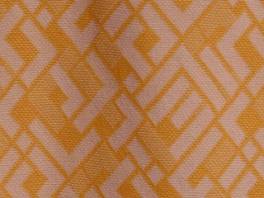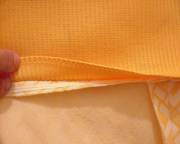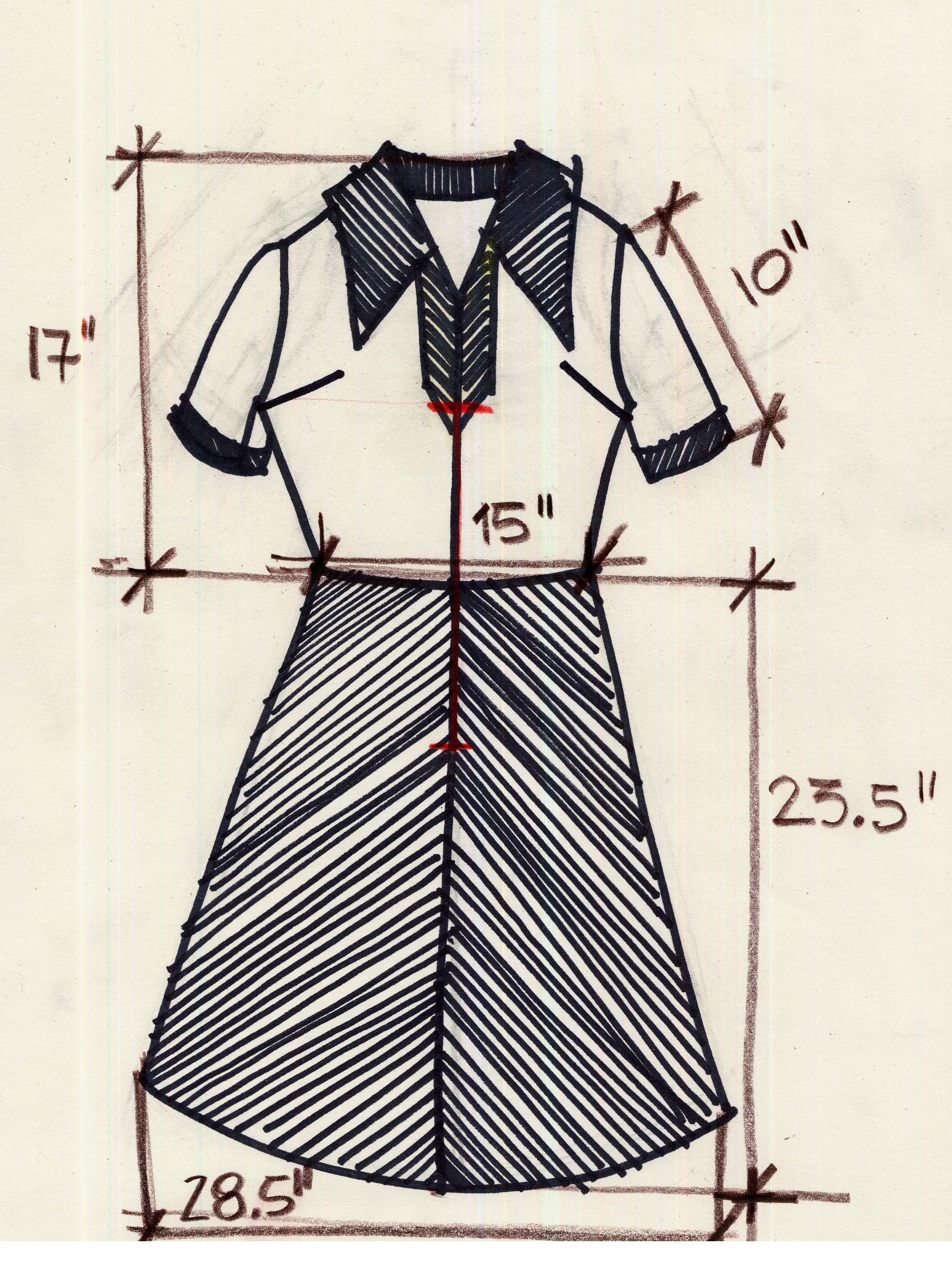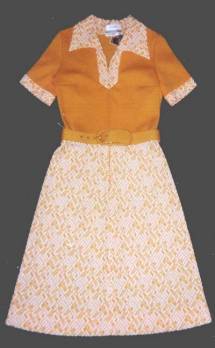1.I. MATERIAL
1.I a. Fibers
Polyester is a synthetic manufactured fiber (MF) with high strength, abrasion resistance and good resilience (can recover well from strain without stretching). It is also wrinkle resistant.
Polyester has particular drawbacks: it absorbs very little moisture and thus, is a static collector.
Acetate is a MF made from natural raw material: cellulose, combined with acetate compounds. Acetate is the generic name. Produced almost solely as a filament (continuous), acetate has a good luster, a soft smooth hand (like silk), and is heat sensitive.
The dress’ s label indicates that the garment is made of 55% Acetate and 45% Polyester
The dress is made of two different fabrics, but each fabric's composition is not specified. Therefore, it is possible to assume that both fabrics contain the same kind and percentage of fibers.
Either the fabrics are a combination of both fibers (the wrap is made up of one fiber and the weft of the other); or the fabric’s yarns are blends (made up of two fibers) (most feasible).
1.I.a Generic names of the fabrics
The back has a distinctive appearance, like chevrons (>>>>), because of the zigzag path of the yarns. Usually the technical back is used as the "right side" since it is smoother. If there are various colored yarns in the tricot (white and yellow yarns), the yarns meet in a lengthwise stripe much more cleanly on the technical back.
Tricot
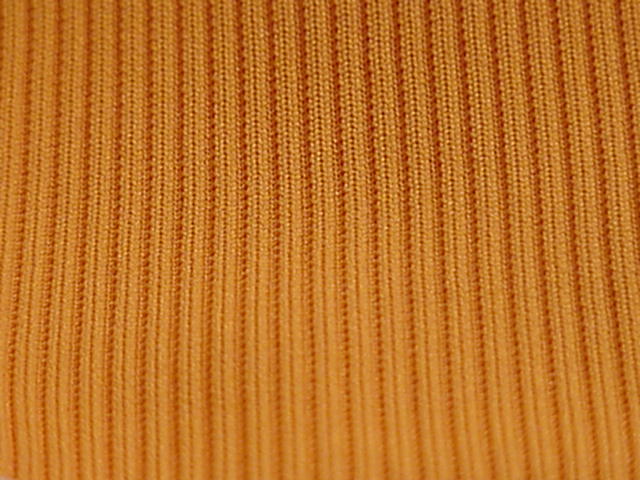
Rib knits are described according to the number of stitches drawn one side by the number to the other (2x2, read two by two). Rib has an excellent crosswise stretch and recovery, and makes a good warm fabric because the air is trapped in its "hills and valleys" surface. Rib 2x2
The dress is also made of a plain-weaved cotton fabric for the collar's and cuffs’ interfacing, and of a jersey ribbon, used at the shoulder seams to avoid stretching.


